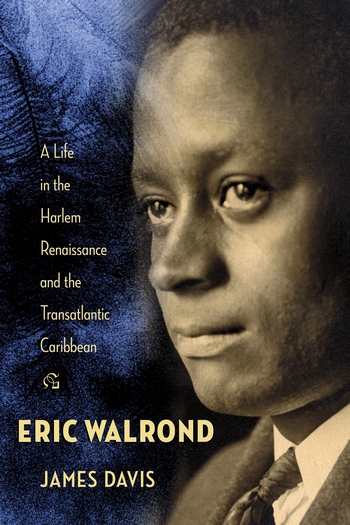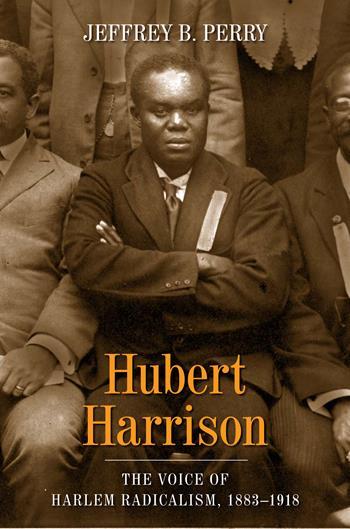Becoming Stuck: Residential Segregation and Upward Mobility in American Cities
By Elizabeth A. Herbin-Triant

“Paying careful attention to social and legal processes in urban and rural contexts, Threatening Property refutes the often-unexamined notion that the rise of de jure segregation unified whites and subordinated blacks. In this pathbreaking study, Herbin-Triant reveals a crucial avenue of research for scholars and points the way forward.”
~Kenneth Mack, author of Representing the Race: The Creation of the Civil Rights Lawyer
Elizabeth A. Herbin-Triant, author of Threatening Property: Race, Class, and Campaigns to Legislate Jim Crow Neighborhoods, joins us on the blog again this week with this discussion of the link between residential segregation and economic mobility as part of our Black History Month feature.
• • • • • •
In Becoming, her inspirational and wildly popular memoir, Michelle Obama describes living through white flight, the process through which white residents abandon racially-mixed urban neighborhoods for white suburbs. During this process, neighborhoods decline in economic vitality, and government funding of schools and other resources plummets. Growing up in a declining neighborhood in Chicago’s South Side did not hold Obama (then Robinson) back, however. Through pluck and hard work, she excelled at her under-resourced neighborhood school, attended a magnet high school followed by Princeton University and Harvard Law School, became a professional success, and helped her husband become president of the United States. What goes undiscussed in the book—but should be noted—is just how rare this type of upward mobility is for residents of the so-called ghetto.
“What goes undiscussed in the book—but should be noted—is just how rare this type of upward mobility is for residents of the so-called ghetto.”
The process through which Obama’s neighborhood transformed was typical. “In 1950, fifteen years before my parents moved to South Shore,” Obama writes matter-of-factly, “the neighborhood had been 96 percent white. By the time I’d leave for college in 1981, it would be about 96 percent black…. Every September… we’d find fewer white kids on the playground. Some had transferred to a nearby Catholic school, but many had left the neighborhood altogether. At first it felt as if just the white families were leaving, but then that changed, too. It soon seemed that anyone who had the means to go was now going.” Eager to protect their investment in real estate, those who could afford to do so moved to communities where property values were considered more stable: all-white communities. Neighborhoods like Michelle Obama’s became all-black and impoverished. The trend has been that the people who reside in these neighborhoods have tremendous difficulty escaping the economic circumstances they grew up in. The Opportunity Atlas, a mapping tool made by a team of economists, shows just how rare it is for young people from impoverished and segregated neighborhoods like the South Side to enjoy upward economic mobility.
But Obama was not stuck. Discouraged from applying to Princeton by a college counselor who doubted that she was “Princeton material,” Obama applied nonetheless, drawn to the university because her elder brother was a student there. And once she had a Princeton degree, the world was her oyster. Perhaps one of the things that so appeals to Americans about the story told in Becoming is that in it, the American Dream is possible. A determined girl from the bottom of the economic ladder can climb to the very top, writing the bestselling book of 2018 and what may be the bestselling memoir of all time.
It is worth pausing here to consider how segregated neighborhoods came to be. What ideas and policies pushed whites out of places like Chicago’s South Side? Why has it been so difficult for poor residents of these neighborhoods to do what Michelle Obama did, and move upward themselves?
“Black homebuyers, unable to get conventional mortgages, had to pay the full purchase price upfront or buy through contract sales, wherein their monthly payments did not accumulate equity, and late payments could lead to eviction.”
Large numbers of African Americans migrated to the nation’s cities during and after WWI in search of industrial jobs and the rights that were so scarce in the rural South. They moved into African American neighborhoods, which became over-crowded. Some who could afford to do so sought to move into middle-class white neighborhoods. A number of cities, including Baltimore, Atlanta, Winston-Salem, and Louisville, responded by passing ordinances restricting African Americans to black neighborhoods. After ordinances like this were declared unconstitutional in 1917 by the Supreme Court, communities that wanted to keep cities’ white and black populations separate turned to restrictive covenants, which prohibited individual homeowners from selling to black buyers. The federal government also played an instrumental role in fostering segregation through programs like the Home Owners’ Loan Corporation and the Federal Housing Administration, which declared black neighborhoods risky places to invest, thus making it more difficult for home buyers in those neighborhoods to qualify for government-backed mortgages. Black homebuyers, unable to get conventional mortgages, had to pay the full purchase price upfront or buy through contract sales, wherein their monthly payments did not accumulate equity, and late payments could lead to eviction. Often, they also paid more for properties than whites would have for similar housing stock, as they were restricted to certain parts of the city where there was high demand and insufficient supply.
White people were motivated to segregate their neighborhoods out of fear that the value of their property would decline as blacks moved in. Ironically, what hurt their property values was their own action; property values in racially mixed neighborhoods were less stable than in racially homogeneous neighborhoods because white homeowners dumped their homes on the market all at once in response to the arrival of African Americans. If panicked whites hadn’t sold their properties en masse, values would probably have risen as the pool of potential buyers increased (to include middle-class black buyers).
“White people were motivated to segregate their neighborhoods out of fear that the value of their property would decline as blacks moved in. Ironically, what hurt their property values was their own action.”
African Americans who reside in places like the South Side become stuck in poverty for a number of reasons. For one, because it was harder for their families to buy homes without conventional mortgages, they have lacked the resources to buy in areas that retained property value, thus accruing wealth through real estate. Attending under-resourced schools, few are able to use education as a social lever; Michelle Obama is unusual in foreseeing what a degree from a place like Princeton could do for her own prospects and in working—without much of a support system in place—to get herself admitted. With higher numbers of residents who have criminal records (as lack of legitimate economic opportunities leads to illegal ways of making money), these neighborhoods are full of people who are not considered for even low-wage, low-skill employment.
This Black History Month, the achievements of exceptional African Americans like Michelle Obama will be highlighted in articles, news stories, commercials, etc. While role models are certainly of value, we would be providing Americans with a richer and more truthful narrative if, in addition to discussing African Americans who have done remarkable things, we discuss the various racist structures that have prevented so many African Americans from doing what Michelle Obama did: achieving her dreams. Such a narrative would help Americans understand that in order to have racial justice, we must work to address structural barriers and their legacies.
Read more from Elizabeth A. Herbin-Triant in this Q&A, book talk and excerpt from Threatening Property. Remember to enter for a chance to win a copy of this work in our book giveaway.






